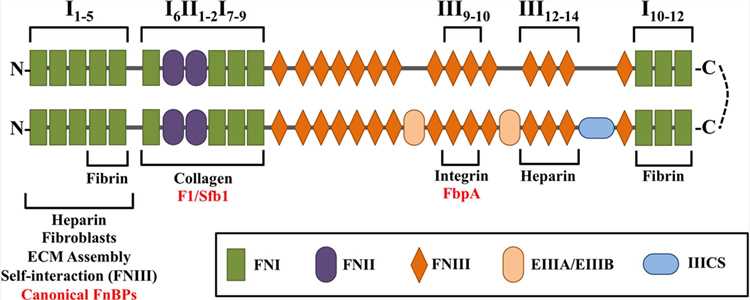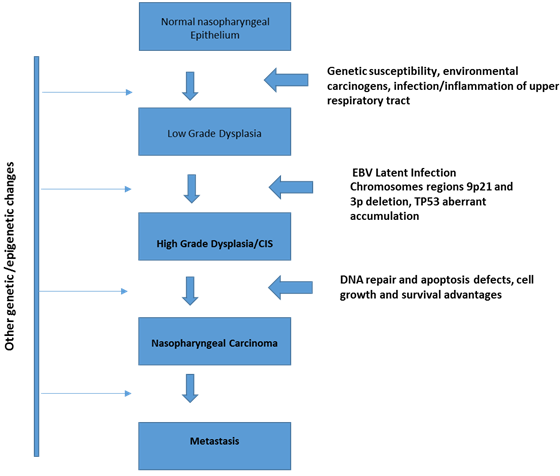NAA Services for Anti-Fibronectin Antibody
Through data mining from the published transcriptomic database with further bioinformatic validation, fibronectin (Fn) was identified as a differentially upregulated protein in nasopharyngeal carcinoma (NPC). Natural autoantibody (NAA), as new biomarkers, may improve the early detection of NPC. As a world leader in the field of NAA research and disease diagnosis, based on our years of experience and advanced platforms, Creative Biolabs is confident in offering the best and most suitable services about anti-Fn.
Background of Fibronectin
Fn, belonging to the extracellular matrix (ECM) glycoprotein family, functions in the ECM process and contributes to cellular adhesion, polarity, migration, differentiation, and tissue remodeling. There are two distinct forms of mature Fn, soluble and insoluble. In general, the structure of Fn consists of 12 FN type I repeats (FNI), 2 FN type II repeats (FNII), and 15 FN type III repeats (FNIII). Though both forms of Fn are encoded by a single gene, they contain different arrangements of domains due to alternative splicing.
 Fig.1 Schematic diagram of the multidomain architecture of a cellular Fn heterodimer. (Hymes, 2016)
Fig.1 Schematic diagram of the multidomain architecture of a cellular Fn heterodimer. (Hymes, 2016)
Fn is upregulated in many tumors, and its expression is negatively related to the prognosis and survival of patients with different cancers, including prostatic, pancreatic, colorectal, cervical cancers, glioma blast and also NPC. Fn can upregulate the expression of matrix metalloproteinases (MMPs), downregulate the expression of p53, and inhibit apoptosis in colorectal cancer. Besides, Fn also executes its functions in infection resistances and microvascular integrity maintenance. According to the evidence, FN is capable to be developed as a potential biomarker in the diagnosis of clinical diseases. For instance, Fn is a potential biomarker for radiotherapy resistance in head and neck squamous cell carcinoma.
 Fig.2 Etiology and pathogenesis of NPC. (Saad, 2014)
Fig.2 Etiology and pathogenesis of NPC. (Saad, 2014)
The Role of Anti-Fibronectin in Nasopharyngeal Carcinoma
NPC, a type of head and neck cancer, has a low prevalence throughout the world but a high incidence in southern China and is commonly diagnosed at the late stage due to its deep location and vague symptoms. Through data analysis, scientists found that Fn was a cancer-promoting protein that was up-regulated in human NPC cells. The level of is positively related to the motility and proliferation of NPC cells since that Fn promoted migration and invasion and inhibited apoptosis by activating the NF-κB/P65 pathway. In addition, the overexpression of Fn in NPC subsequently leads to the production of anti-fibronectin autoantibodies, both of which are indicated to be associated with advanced disease stage and short survival. Even the antibody levels against Fn in sera positively correlated with the clinical stages of NPC. Therefore, FN and its autoantibody anti-FN, particularly anti-FN antibody, in the sera or tissue of NPC patients could be used as the basis for a screening test for NPC.
What We Can Do About NAA?
Fn may serve as a predictor of NPC invasion and migration, thus becoming a potential treatment target in NPC. Given the roles of Fn in risk stratification and in the frontline therapeutics of NPC, Creative Biolabs has devoted considerable energy into NAA analysis against Fn for the NPC disease. Accumulated abundant experience in the successful completion of many NAA-related projects, we are committed to providing the most comprehensive NAA services for our global clients with the best quality and the most competitive prices. If you are interested in our services, please don’t hesitate to contact us for more information.
References:
- Hymes, J.P.; Klaenhammer, T. R. Stuck in the middle: Fibronectin-binding proteins in gram-positive bacteria. Frontiers in microbiology. 2016, 7: 1504.
- Saad, S.; Wang, T.J.C. Nasopharyngeal carcinoma: Current treatment options and future directions. Journal of NasoPharyngeal Carcinoma. 2014, 1(16): e16.
Related Services:
- NAA Services for Anti-MAGE
- NAA Services for Anti-CD44 Antibody
- NAA Services for Anti-BMI-1 Antibody
- NAA Services for Anti-EBNA-1 Antibody
- NAA Services for Anti-NY-ESO-1 Antibody
- NAA Services for Anti-PRDX2/3 Antibody

